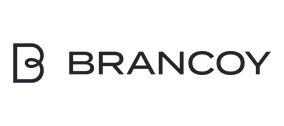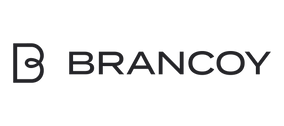In the world of digital marketing, visibility is crucial for a company's success. Paid online advertising, where businesses pay directly to the advertising platform, is one of the most effective ways to reach potential customers today. This form of digital marketing enables quick visibility and precise targeting, ensuring that ads reach the right audience. In this article, we explore paid advertising, its different types, benefits, and practical implementation.
Digital marketing can be divided into two main categories: paid and organic visibility. Paid online marketing refers to purchasing ad space on various platforms to reach a target audience. Unlike organic visibility, which relies on natural search engine rankings or social media reach, PPC (Pay-Per-Click) advertising guarantees immediate exposure.
The most popular paid advertising platforms include Google Ads, which dominates search engine advertising, as well as social media platforms like Meta (Facebook and Instagram), LinkedIn for the business world, and the rapidly growing TikTok for younger audiences. Each platform has its own strengths and target groups, allowing businesses to build diverse marketing strategies.
|
Advertising Platform |
Target Audience |
Pricing Model |
Strengths |
Weaknesses |
Best For |
|---|---|---|---|---|---|
|
Google Ads |
Broad, search intent-based |
CPC, CPM, CPA |
Purchase intent, strong ROI, wide reach |
Competitive, can be costly |
Businesses of all sizes, especially product searches |
| Meta (Facebook & Instagram) |
Wide demographic reach, B2C |
CPC, CPM, CPA | Precise targeting, visual appeal | Declining organic reach | B2C, visual products, local advertising |
|
Professionals, B2B |
CPC, CPM | Role- and industry-based targeting | Higher costs | B2B, expert services, recruitment | |
| TikTok | Young adults (16-34) | CPM, CPC | High engagement, virality | Requires specialized content | Youth-focused brands, trending products |
| YouTube | Broad age range | CPV, CPM | Video format, long watch time | Expensive video production | Brand building, product showcases |
| Female-dominated, lifestyle-oriented | CPC, CPM | Purchase intent, long lifespan | Limited user base | Interior design, fashion, food, crafts |
Why Is Paid Advertising Important for Businesses?
Digital advertising offers businesses significant competitive advantages. One of the biggest benefits is immediate visibility—campaigns can start generating traffic and conversions as soon as they go live, unlike organic methods, which can take months to show results.
Another key advantage is precise targeting. Ads can be directed based on demographic factors, interests, or purchase intent, ensuring they reach the right audience. This works just as effectively for small local businesses as for large international companies. Additionally, the measurability and scalability of paid advertising make budget management transparent and flexible.
How Does Paid Advertising Work in Practice?
At its core, paid advertising often operates through an auction-based system where advertisers compete for visibility among their target audience. Algorithms determine ad placement based on bid amount, ad quality, and relevance to the user.
The most common pricing models include:
- CPC (Cost Per Click) – Paying only when someone clicks on the ad.
- CPM (Cost Per Mille) – Paying for every 1,000 impressions.
- CPA (Cost Per Acquisition) – Paying only for completed conversions.
Targeting options vary by platform, but typically include location, interests, behaviors, and past interactions.
When Should You Start Paid Advertising?
Timing is crucial for launching an effective ad campaign. A new product launch is an ideal moment to invest in paid visibility, as quickly increasing awareness is critical. Seasonal periods such as Black Friday or the holiday season also provide excellent opportunities to reach ready-to-buy customers.
For budgeting, it's wise to start conservatively and scale successful campaigns. A new e-commerce store should allocate at least 10-15% of expected sales revenue to marketing to set realistic ROI expectations. As a business grows, advertising becomes even more critical in competing for market share.
How to Measure the Effectiveness of Paid Advertising?
Successful advertising is based on continuous measurement and optimization. Conversion optimization tracks user actions from viewing an ad to completing a purchase. The most important metrics to monitor include:
- CTR (Click-Through Rate)
- Conversion Rate
- ROAS (Return on Ad Spend)
- Customer Acquisition Cost (CAC)
Effective measurement requires the right tools, such as Google Analytics, Meta Business Suite, and platform-specific analytics dashboards. Successful online stores often use attribution models to understand the impact of different touchpoints on purchasing decisions. Regular reporting and data analysis help identify successful strategies and areas for improvement.
Key Takeaways and Strategies for Paid Advertising
Successful online advertising is built on a few fundamental principles:
- Clearly defining your target audience is crucial—the better you know your customers, the more effectively you can reach them.
- Allocating budgets across different channels should be based on data, not assumptions.
- A/B testing is essential for continuous improvement of ads.
E-commerce businesses should leverage dynamic retargeting to re-engage users who have shown interest in their products. At Brancoy, we help our clients build comprehensive advertising strategies that support Shopify e-commerce growth objectives. When done right, paid advertising is not an expense but an investment that can multiply its return many times over.
The digital marketing landscape is constantly evolving, and professionals stay ahead of the curve. Take the next step in growing your online store and discover how strategic marketing can transform your business results.




